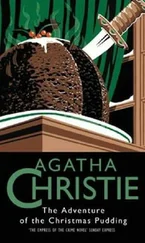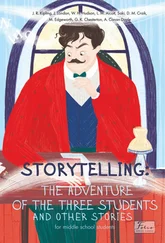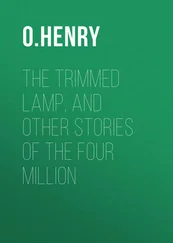Internal walls are torn down and expanses of masonry replaced with large windows to convert a whole string of attic rooms — the ones with the best exposure — into a studio that could be used for painting, or sculpture, or any other art or craft. . To keep all the options open, the priest fills that ample space with easels, drawing boards, clay-firing ovens, stretchers, paper, brushes, and chisels. Persisting in the artistic vein, he sets up a space for music downstairs, on the piano nobile , with a soundproof acoustic chamber, for which he orders a Bösendorfer piano, an Érard harp, violins and cellos made by the finest luthiers, and various exotic instruments — stringed, wind, and percussion — including a beautiful samisen. Next to this space, made by joining two interior rooms that he judged to be superfluous, is a little theater, opened up in the same way, with thirty seats (upholstered in wine-colored Venetian velvet), rococo decoration, and a stage equipped with the latest systems for changes of scenery and lighting.
At a certain point, before these renovations are completed, he begins work on the grounds, for which he has grand plans. The first is the construction of a tea pavilion, to which he commits himself heart and soul, determined to make it an epitome of refinement and comfort. He decides on a light, ethereal structure, a little house of dragonfly wings, continuous with its natural environment, as a contrast to the house’s majestic solidity. He approaches this task with the deepest seriousness; the pavilion is to be the alternative to the house in every respect. He rejects the designs submitted by a series of well-known architects until one set of plans, produced and modified according to his instructions, finally meets with his approval, and then the building begins. Bricks and mortar are ruled out; the whole thing is made from bamboo and rare timbers, fabric, glass, and paper. It’s a fairy-tale retreat, its spaciousness dissembled by the surrounding vegetation, the flowering vines that appear to be extensions of the structure, and the various hidden levels within. Although it has a studied austerity, the interior contains many little salons looking out onto different parts of the grounds, and an abundance of sliding panels, raffia mats, and rugs. The visitor enters via a broad, elevated veranda, suggestive of tropical colonies.
As one season gives way to another, the grounds begin to preoccupy the priest, and he spends a lot of time on them, without neglecting the house, in which there is always something to be done. In addition to replanting copses, laying out avenues of statues, introducing topiary, fountains, arbors, and a grotto, he undertakes more ambitious projects. He populates the gardens with deer, of a delicate and decorative breed, like the pheasants and peacocks that he also imports, which provide fleeting, sumptuous flashes of color among the plants. Specially trained staff are employed for the care and breeding of these creatures.
Neglecting the category of animals was, he thinks, a major oversight on the part of his predecessor. When considering an unknown future man, and trying to cover all his needs, animals to live with might be a priority. Or not. You never know. But since those humble, quiet companions have been a consolation and a joy to so many people, they cannot be ignored. For his successor they might be especially important, and the cost of acquiring them and providing an adequate habitat would reduce what he could give in aid to the poor. So the priest sets about building stables and kennels amusingly designed to resemble medieval castles, Hindu temples, and Mayan pyramids, all to scale, and fills them with handsome Arab steeds, greyhounds and mastiffs, Pomeranians and lapdogs. A tall columbarium on the top of an artificial hill beyond the lake is filled with doves imported from distant lands. And inside the house there are various aquariums of different sizes, to soothe the eye with mobile, live decoration, culminating in an enormous tank that takes up a whole wall, in which a big golden manta ray from the Indian Ocean glides among yellow longnose butterflyfish, little red fish as bright as rubies, slimy octopi, and seahorses riding on transparency like marionettes.
Time goes by and the priest grows older, work and hope occupying his days. There is, he feels, something microscopic about his work. The house has been left to him entire and complete, but from the moment he decided to decline the invitation to sainthood and pass it on to the next priest, he started finding little cracks to fill in that apparent completeness, and even after all this time and everything he has done, he’s still finding them. Each addition and improvement defines a new characteristic (always in the form of an alternative, a choice among possibilities), enriching the figure of the priest who will come to open the gates of heaven for him and his predecessor with the golden keys of Charity.
For he has not lost sight of Charity. Quite the contrary: it is the center and motor of his striving, although he will not be the one to practice it, which grieves him deeply. In his visits to the areas where the poor people live, he must close his eyes to the wretchedness of a situation that he cannot remedy: he has come too soon. He consoles himself with the thought that it makes no difference whether action is taken now or a generation later: by their very nature, desperate situations of that kind tend to perpetuate themselves. And when he returns to the house and its grounds, to that splendor built in the name of Charity, he sees it transformed into the enormous good that his successor will be able to do.
Protected by hope, then, he continues with his work, and, as with the previous incumbent, his excursions become less frequent until one day they finally cease altogether. Age, he feels, is bringing him closer to the man who will come to fulfill the promise. Old now, he approaches the young man to whom he has devoted so much thought, whose reactions he has tried to anticipate, guessing his preferences for this or that color, for a style in furnishing, or a way of spending his evenings. At certain moments, in the fuddled ramblings of senility, he believes that his successor is there already, opening the door and walking in, wet from the rain and ruddy-cheeked from the cold, exhausted after a day spent in the shacks of the local people, comforting the sick, taking food and clothing to the destitute, supervising the building of a school. . The new priest wants to relax now, and for that he has his comfortable abode. . but perhaps what he needs to complete his satisfaction at that imagined moment is a pipe to smoke, a harmless indulgence for an active man. . but there’s not a pipe in the house! Emerging from his somnolence, the old priest orders a set of pipes, in various woods and meerschaum, with mother-of-pearl and carving, and revolving pipe racks, and a set of pipe tools. .
These increasingly minor and intimate additions occupy the final days of his life. When the new priest arrives, he admires the house and is horrified by the terrible poverty surrounding it, as if he were performing a ritual. Just as his predecessors anticipated, the contrast intensifies his determination to act, and he is about to start handing out milk and diapers for the babies, medicine for the sick, blankets and fuel for the rudimentary huts that offer scant protection from the winds of a harsh winter. If he delays, it is not for want of initiative, but because there is so much to do. There is so much poverty, he doesn’t know where to start: the urgent needs compete among one another fiercely. And this delay, though meant to be brief, is long enough for his intention to deviate. Prompted by a natural curiosity, he visits the house, the gardens, the tea pavilion, the deer park; he only has to live there for a day, or an hour, perhaps just a minute, to catch the echoes of a former future of which he is the incarnation, and he begins to understand what motivated the builders. The sacrifices they have made for him are sublime, and it seems mean to take advantage of them. . He will be followed by another, and he is inspired by the idea of working for that other because, as he gradually sees and understands everything that has been prepared for him, he notices all the things that could be perfected and added for the next priest. .
Читать дальше












